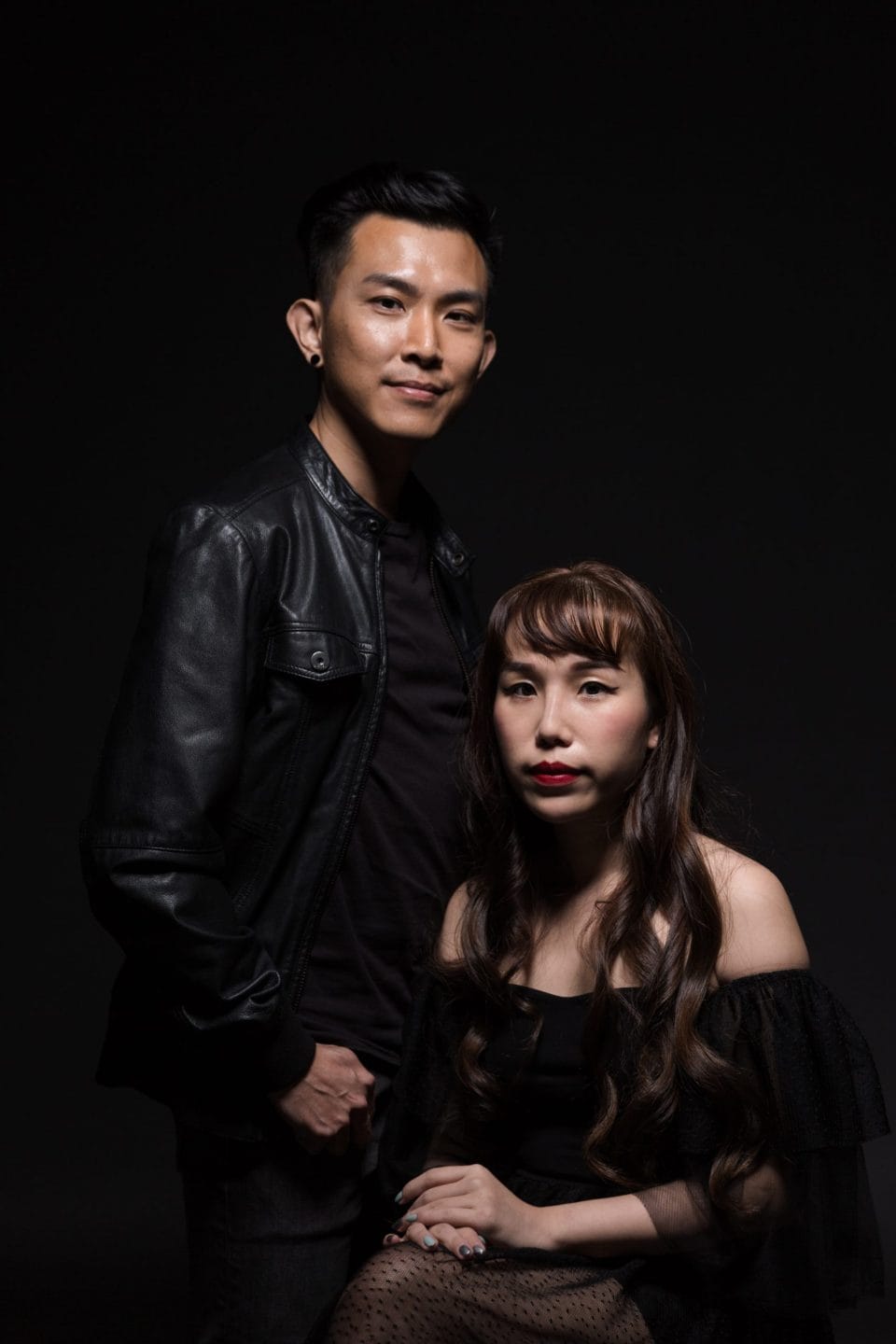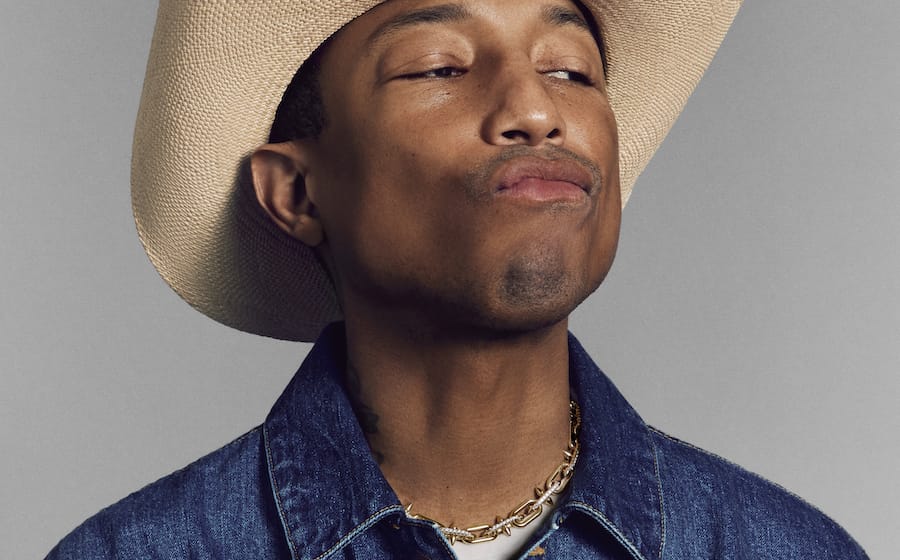
When fashion is pushing its commercial viability by playing with trends, how does technology support this innovation? Is it beneficial for artists and illustrators to participate in this conversation as fashion creatives move their work from the physical to the digital space? How does that reflect on the state of fashion today? We invite Jamela Law, Creative Director of Baëlf Design, and Lionel Wong, technologist and researcher of Baëlf Design, to share a meta point-of-view of how this merging of worlds affects them and the industries at large in the second of this four-interview series.
How did the idea for Baëlf Design come about? The combination of fashion and industrial design seems very unlikely, yet also very fitting.
J: Baëlf was conceived because Lionel and I share the same curiosity, passion and purpose of widening the possibilities of fashion, which we define as the design of change and an extension of self. We were aware that perception and experience of design are radically changing now that new technology dominates our everyday lives. Having a multi-disciplinary, tech-infused practice ensures a constant flow of novel ideas and the capability to bring to life new aesthetics.
We felt the region seem to be lacking in daring ideas, and in response, we wanted to set precedents for innovative art and fashion design in Asia. In a way, Baëlf’s work documents what we see in today’s trends, challenges and ways of design thinking. The cross-disciplinary aspect of Baëlf is crucial: Lionel and I synergise our respective skill sets from and experiences to develop new tools and processes. We also learn from fields like architecture, computer science, and machine learning, as well as cultural and media arts.
It’s so interesting that your designs are inspired by biomimicry, something found in nature, yet the outcomes are so futuristic and made via a very modern piece of technology — 3D printing. Is there a reason for this contrast?
J: We see nature as inspiration and the machine as a collaborator. I like uncovering poetry hidden in what is perceived as natural and ordinary, to create a visual language that viewers can comprehend and be amazed by. We derive formulas from nature and use these data as our pigment and cloth. Understanding the mathematical backdrop to natural phenomena such as the blooming of flowers, the food-seeking behaviour of slime mould and how certain growth patterns exhibit the Fibonacci sequence are some examples.
In my opinion, technology makes the human imagination more sensual and multi-dimensional. Our human minds are limited and inconsistent, and technology has already transcended us. The vast memory capacity, empowering capabilities and versatility technology offers gives me comfort. The futuristic aesthetic is just something not seen before; technology allows us to extract, curate, and permutate visuals that would otherwise be impossible to make by hand. The increase in computing power also allows us to work on media with higher detail levels and push boundaries with materials.
Ultimately, the final aesthetic is dependent on the physical restrictions of our 3D printer and budgeting. For instance, Fused Deposition Modelling (FDM) printers have several constraints that other printing technologies may not have, such as the need for supporting structures to hold aloft overhanging portions of a model, or the smallest resolution of detail in the model being restricted to the size of the hot-end nozzle (usually 0.4mm). 3D printing has been around since the 1980s and the relevant technologies are getting mature, so even with all their limitations, we are lucky that additive manufacturing is now readily available and much more affordable to play with.

What does the typical design process look like for you guys? I feel like you guys might probably need to self-teach quite a bit since 3D printing is relatively new still.
J: Every project is a learning journey that starts off with a vision but no detailed sketches. I make it a commitment to play with something new with each project, avoiding repetition or reusing the same techniques. As someone ever hungry for knowledge, doing research for every fresh project is the fun part. But applying this knowledge in new, innovative ways is not so straightforward. Crafting novel design processes and fabrication techniques while straddling the various domains of Art, Fashion and Design is truly a leap of faith.
Between Lionel and I, communication is key to our work process but it can be hard to express ideas to each other and be understood immediately. How do you communicate in 3D? I also find 2D sketching can be misleading and frustrating. When we create art, how do we convey intangible concepts when words and images do not suffice? As a result of our penchant for trying new things, our skill sets have been upgrading tremendously since we started in 2017. We had no choice; it is self-learning most of the time for us because we have few to turn to. Fashion tech designers are a rarity in Singapore!
It’s really brave of you guys to delve into digital fashion at its infancy, way before the whole Metaverse and NFT movement really took control of the fashion industry last year. Now that there is a spotlight on tech in fashion, are there any interesting observations of where things are going? Do you think it was a natural progression or hype-driven?
J: Fashion has always been about the early adoption of technology, as seen from the invention of the Jacquard loom, generative garment design, etc. I appreciate also how fashion is complementary to seemingly contrasting fields and has so much potential for inclusivity and education. It is not as superficial as some might think.
I understand that several cryptocurrencies have crashed in recent months and that had engendered doubts in many people. However, I am on board with mathematician statistician Nassim Nicholas Taleb’s Black Swan theory, which refers to the human tendency to rationalise an event in hindsight using simplistic explanations, even though the event is an unpredictable outlier beyond normal expectations of science and human knowledge. Crypto is young and like Schrödinger’s cat, anything is possible.
In light of these past months, artists and investors should focus on the building of robust systems to weather possible future negative events and to always keep an eye out for opportunities to learn, develop and innovate.
Personally, do you guys think that the Metaverse and NFTs are the way into the future? Why or why not? Fashion design is fundamentally a very tactile thing, yet the Metaverse and digital space allows no such sensation. What do you think this says about fashion today?
J: I believe people are products of their time, and therefore will treasure different things. For instance, Gen Zers grew up as digital natives and hence inculcated a familiarity with the digital. Many generations reside on the same planet but we live in different worlds. Future generations might even treasure intangible assets more than physical ones since the latter is prone to deterioration. As an example, gamers already see digital goods as valuable and collectable. Likewise, most people no longer purchase physical media such as DVDs or Blu-ray movies and rely on digital streaming libraries. Their devices are portals to immense new worlds teeming with life and potential. Tactility seems secondary in the face of an unlimited and overwhelming supply of stimulants.
That said, the Metaverse offers an effective way to reach out to the global market, and this is especially beneficial for Singapore-based creatives. The ability to connect across platforms helps us to transcend geographical constraints. The idea of ownership is evolving and a new digital reality is inevitable. Even so, there is no ‘one way’ into the future; we believe this physical Earth and our digital realms can accommodate a multitude of realities. We as artists stay relevant both by learning from the past and being open to new opportunities.

Do you think fashion’s emphasis today is more on commercial viability or artistic expression now or are its core values changing? One-of-a-kind art is celebrated by the NFT space yet it is sold in a “marketplace”. What are your thoughts?
L: Commercial viability and artistic expression are not mutually exclusive. The myth of the ‘starving artist’ only serves to erode the viability and respectability of the artist’s career. We believe creators fully deserve to perform fulfilling work and be commensurately compensated and respected for it, be it for a one-of-a-kind piece or for many, on an NFT marketplace or elsewhere.
Do you think fashion can be independent of trends via NFTs and Web 3.0?
L: Fashion is about innovation in all its forms, and I do not believe it will be constrained by the whims and trends of specific technologies. The innovation of NFTs and Web 3.0 have their place at this specific point in time, and they will eventually be replaced or subsumed. Fashion, however, is classic and cyclical, and as long as there are people who are given the space to create and express, it will continue to exist and evolve.
How do you think the arrival of the big fashion players in this space affects the other creators who have already made a home there? (3D artists, illustrators, graphic designers, etc.)
L: We reject the assumption that big names cannot share a space with lesser known ones nor are these entities exclusionary in mindset. In a digital medium, there should be enough space for all creatives to express themselves as we are not bounded by physical limits. With a community filled with such a wide variety of personalities and capabilities, we see potential and room for rich collaboration.
Lastly, do you guys have any plans to bring Baëlf Design into the metaverse? Why or why not?
J: Baëlf’s first step into the Metaverse was a collaboration with Vogue last year. Vogue’s September issues have to be statement-making, and the editor wanted the cover to be ground-breaking and news-making. Hence we collaborated on their first-ever NFT cover series which was sold on Opensea.io. More recently, we also worked with The Front Row’s director Daniel Boey during Singapore Design Week on a Phygital exhibition, with a mixed-mode NFT showcase curated by MIRL at Raffles City.
Baëlf does not follow the commonly regarded business model of the Metaverse. For instance, Bored Ape Yacht Club uses a generative algorithm to compose 10,000 apes with randomly assigned attributes. Granted, it is very systematic and lucrative, but we acknowledge the resultant significant environmental impact so Baëlf only creates and mint works that mark a milestone or celebrate an occasion. The romantic side of us also craves to only produce works with a personal touch.
Once you’re done with this story, click here to catch up with our October 2022 issue.







